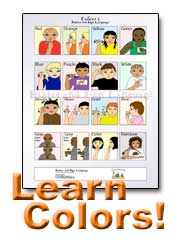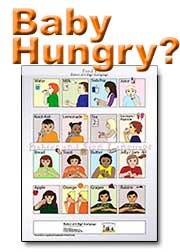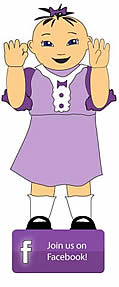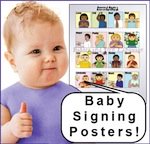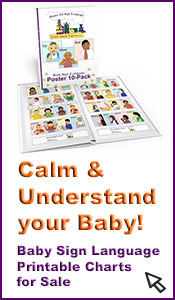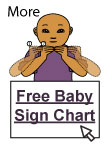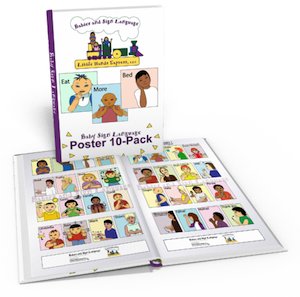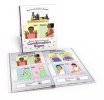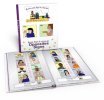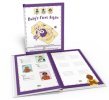Sign Language for Infants
How Early Can We Begin?
Teaching sign language to infants can begin at any age. Our infants are an amazing, unfolding mystery.
There is no way to predict how quickly a child will learn and grow intellectually. Everyone develops at their own pace. So you can start teaching infants American Sign Language from birth.
If you decide to begin this early though, you need to understand that your infant will not actually be able to sign back until somewhere between the ages six and eight months old.
There are occasions when an infant will start signing earlier, but 6-8 months is the typical age range for babies producing their first sign.
So why would some parents choose to begin sign language for infants at birth?
(Notice how Mama gets Baby's attention first before signing?)
For one thing - babies understand you whether if they can sign back yet or not!
Many infants who are exposed to sign language before six months often develop cognitive skills at an earlier age. These babies will begin signing on their own sooner than normally expected. They will also sign with a larger vocabulary.
It is almost like turning on a switch when a child connects signing and the need or object the sign represents.
Like learning to talk, developing communication skills only makes a human being want to find additional ways to expand that ability. That is true for infants also. This is one huge reason why signing babies tend to talk sooner than non-signing babies.
Now, there is no guarantee though that an infant exposed to sign language before six months old will begin signing earlier than the normal seven or eight months old infants.
But the reality is sign language for infants even at two months old has other advantages. For one thing, infants this young are still learning eye coordination.
Baby Sign Language Teaches Infants to Focus
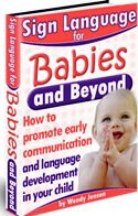 Hand signing is movement for infant focus. This engages your baby’s attention.
Hand signing is movement for infant focus. This engages your baby’s attention.
This is the reason why shadow puppets are so popular with children.
Shadow puppets are based on hand gestures and hand movement, and are fascinating to babies and children.
With sign language for infants you also have a means to pacify or entertain an infant at any given time. Infants get fussy, and when awake, need plenty of visual stimulation.
Using Baby Sign Language to entertain your infant is fun and instructional. This teaches from day one that learning can be fun and is not a chore. We are all the sum of our experiences and these experiences start at birth!
When you observe your infant, one of the first things you notice is their propensity to make faces that indicate they want milk. That is a facial gesture.
It is not long before those facial gestures are supplemented with arm and leg gestures. Infants on will kick and wave their legs when happy.
Exposing babies to sign language for infants at an extremely early age gives the infant something concrete to use for hand motor skills when that day arrives.
If you intend on teaching Baby Sign Language to your baby, there are certainly many benefits to be derived by starting early. If anything else, you can use the early months as time to practice your signing skills. Then, when your baby starts signing and wants to learn more and more, you will be prepared!
First time mom? The Essential Infant Resource (EIR) helps you every step of the way with your baby's first year - Click this link for great info!



